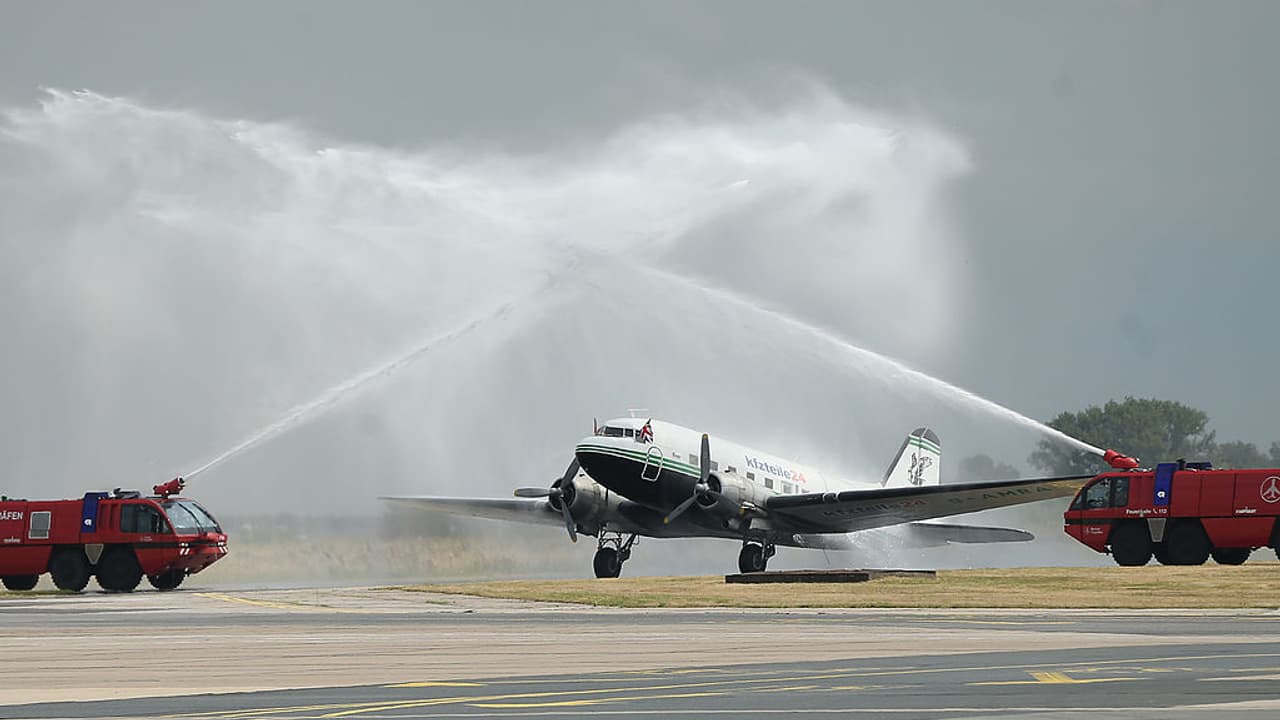Planes are sometimes sprayed with water before take-off as part of a ceremonial ‘water salute’. Two fire trucks create a water arch to honour pilots, aircraft, airlines, or major milestones. The tradition comes from the maritime industry.
Many passengers feel a bit confused when they see their plane suddenly being sprayed with huge streams of water as it moves towards the runway. It can look dramatic, surprising, and even worrying. But the truth is simple: this moment at the airport is not an emergency, not a safety problem and not even a last-minute cleaning job. It is a ceremony. And it has a long history.
Below is a clear look at why airports do this and what it really means.
What is a water salute?
The act of spraying a plane with water before take-off is called a water salute. It is one of the most respectful traditions in the aviation world. During a water salute, two airport fire trucks park on either side of the taxiway and spray large arches of water over the aircraft as it slowly passes underneath.
It looks like a giant water tunnel, and it is meant to honour either the aircraft or the people flying it.
When do airports perform a water salute?
Airports use water salutes for special moments. These include:
- The final flight of a pilot before retirement
- Retirement of a senior airport worker
- The first or last flight of an aircraft model
- The first or last flight of an airline to that airport
- A mark of respect for military personnel who died in action
These events are rare, which is why most passengers may see a water salute only once or twice in their lifetime.
Is it the same as deicing?
Many passengers mix up a water salute with deicing. But they are not the same. Deicing happens before the plane even begins to taxi. It uses special chemical fluids, not water, to remove ice or frost from the wings and body of the aircraft. This is done only for safety.
A water salute is different. It is ceremonial, happens after the aircraft starts moving, and uses only water from airport fire trucks.
Where did the water salute come from?
The tradition did not start in aviation. According to an explainer from Amsterdam’s Schiphol Airport, it began in the maritime world. Ships received water salutes on their maiden voyages or when completing significant journeys.
Once aviation overtook sea travel, airports adopted the same gesture to honour aircraft and crew in the sky.
Are water salutes dangerous?
Water salutes are generally considered safe. Airport fire crews control the pressure carefully and use trained staff to make sure the water does not hit sensitive parts of the aircraft directly.
Scroll to load tweet…
Scroll to load tweet…
Scroll to load tweet…
Scroll to load tweet…
However, there have been a few rare incidents.
One of the most recent cases happened in 2018 at Dubai Airport. The airport performed a water salute to mark Saudi Arabia’s 88th National Day. During the salute, one fire cannon malfunctioned. Instead of creating an arch, it sprayed water directly at the aircraft. This triggered an overwing emergency exit and a passenger sitting near that door suffered minor injuries.
Incidents like this are extremely rare, but they show why airports must follow strict guidelines when performing salutes.
A tradition that continues
Despite these unusual cases, water salutes remain an important part of aviation culture. They help mark emotional moments, celebrate milestones, and honour people who have contributed to the industry. For passengers, seeing a water salute can be surprising, but it is completely safe and nothing to worry about.
